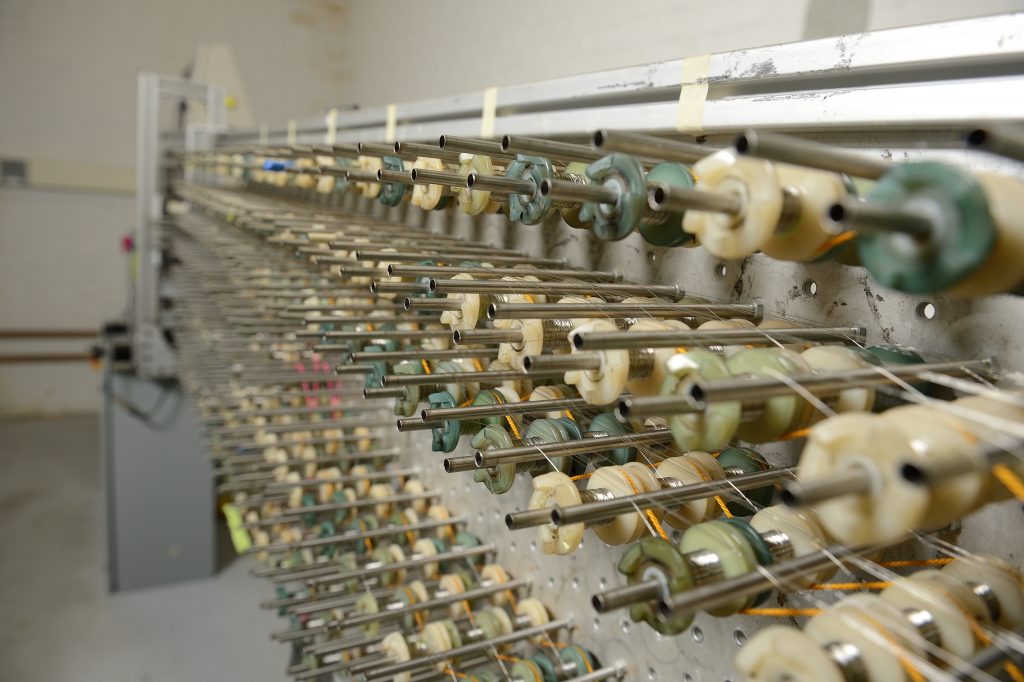
Sometimes, materials just don’t behave the way you need them to. So Timothy P. Weihs and his collaborators have gotten creative. By weaving metal threads into intricate patterns, he can make webby 3-D materials with unique—and potentially very useful—properties.
“As a discipline, materials science has been focused mostly on the microstructure of materials, things like crystal size and orientation,” says the materials science and engineering professor. “What we’re realizing is that the material’s architecture also is important.”
Weihs makes the 3-D lattices using a high-tech loom. Think of it as a textile loom on steroids, and add a third dimension. Wires wound on about 500 bobbins come into a central region from all three directions, where they are interlaced to create a 3-D mesh. The result is a designer material with pores and ligaments of specific sizes placed at precise spots to create a material with desired properties.
Take, for example, the highly porous yet extremely stiff 3-D weaves that Weihs has made together with James Guest, associate professor of civil engineering, and Kevin Hemker, the Alonzo G. Decker Professor of Mechanical Engineering. The 3-D metallic lattice—which can be made of metals or ceramics—absorbs vibrations, and coolant flowing through its pores allows it to work at temperatures as high as 1,000 degrees Celsius, making it useful for engines and power turbines. “No materials are available for such high-temperature damping,” Weihs says.
Most recently, the trio made woven 3-D copper lattices that could be used for cooling high-power laser diodes. Compared to the series of flat, vertical copper fins used today, the lattices give higher, more uniform cooling. Weihs will also be making 3-D polymer and metal lattices that can serve as scaffolds for growing muscle and bone tissue.
Guest, Hemker, and Weihs are now forming the Johns Hopkins Center for Advanced Manufacturing and Architected Materials. By integrating the design, modeling, manufacture, and testing of architected materials, the center aims to advance their science and enable their adaptation in a wide range of engineering applications.




